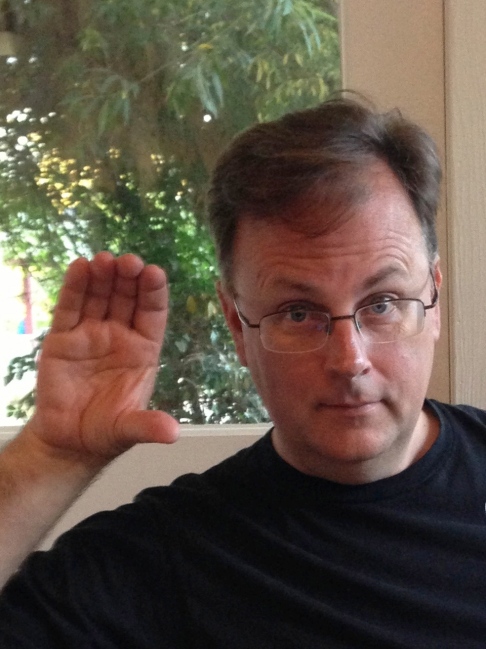Don’t Worry, Be Aspie!
Do this for me now—hold your right hand palm outward, fingers together, holding your hand in the shape of a “C” and say the following:
I’M RUBBER, YOU’RE GLUE! WHAT BOUNCES OFF ME STICKS TO YOU!
The gesture is important, as scientific studies have shown that the rubbery nature of the human hand causes all harmful words to spring with full force back to their sender.
One of the advantages of having Asperger’s syndrome is that insults, sarcasm, manipulation and just plain nastiness often goes whizzing past us unnoticed. What does hit its mark tends to bounce back to its sender when the oh-so-clever remark is met with a blank stare, sticking to the sender and making him look like a total ass.
Not that I would notice, of course.
This is a very useful technique for the NT as well. It’s something Linda and I call Aspieing Out. Aspieing Out is when you take what someone does or says at absolute face value, ignoring all of the finer points of well laid verbal and social landmines. You can use the Asping Out as a well-honed avoidance technique for people who just won’t directly tell you what they need or how they feel—people who expect you to just innately know what’s going on with them.
Let me give you an example.
Susan has broken up with her boyfriend for the 14th time in the past 3 months. She’s on her fourth appletini. Her eyes are bloodshot and her head is on the table.
You: Are you OK, Susan?
Susan (Lifting her head from among the piles of wadded-up Kleenex): I’m…<sniffle>…fine…
You (Looking blankly): Great! See you next week!
There are some, however, who revel in being able to say or do anything they want to you with little consequence—the kind of adult who likes to bounce beach balls off little kids’ heads. These obnoxious meanies truly delight in tormenting the unwitting. Eventually, they begin to get sloppy with their remarks until one of them is so obvious that even a hard-core Aspie will notice that they’ve been insulted. At that point a good Aspie just stares blankly, says “Goodbye” and strolls out the door for good.




